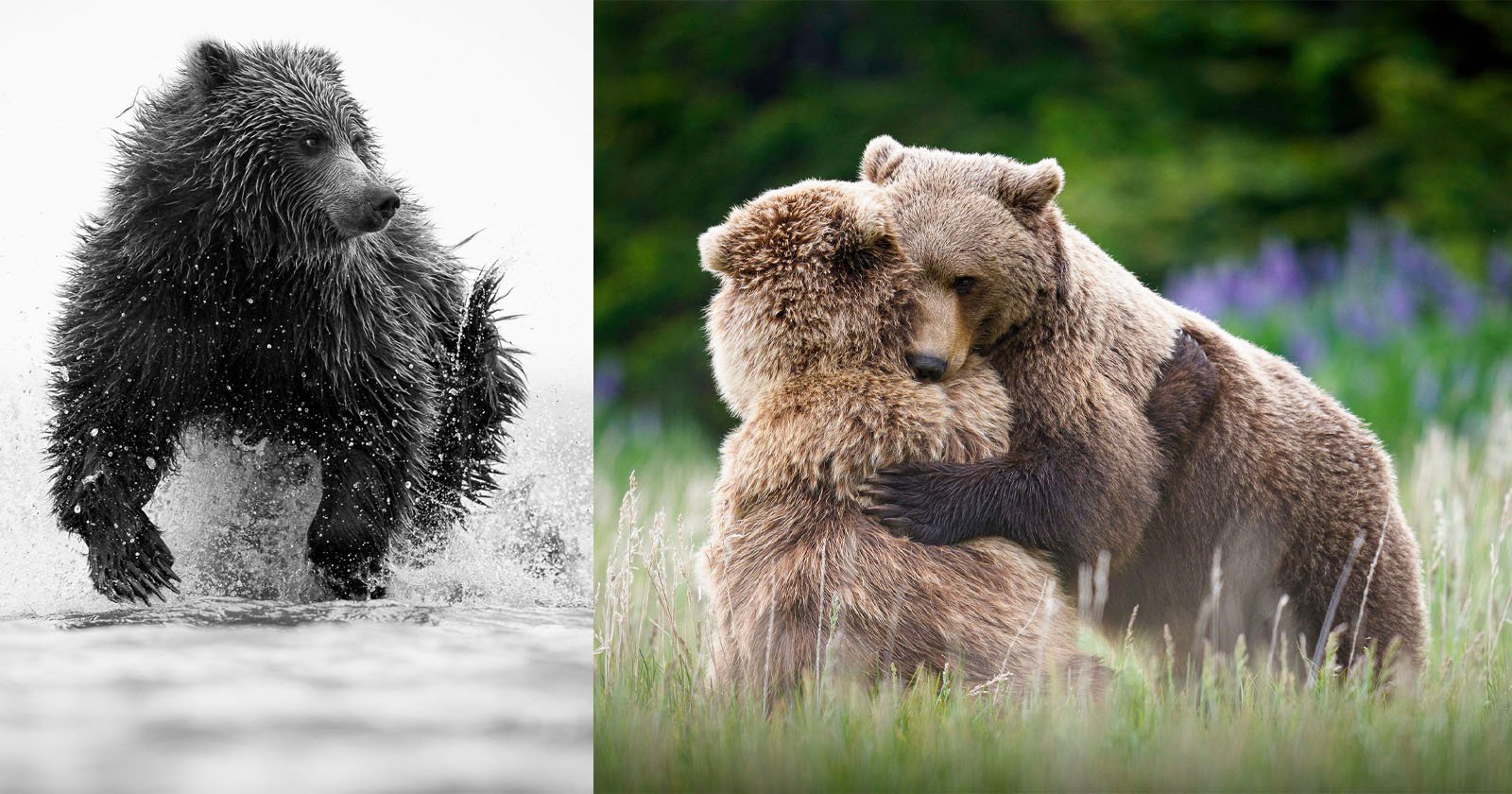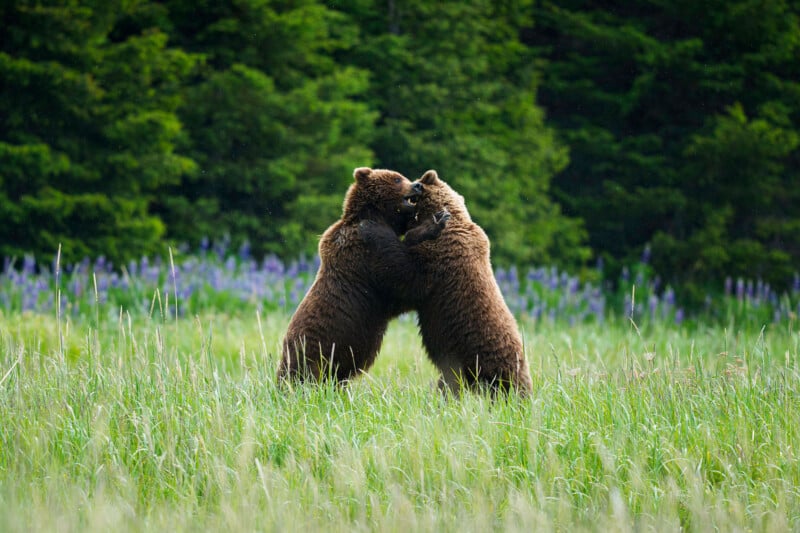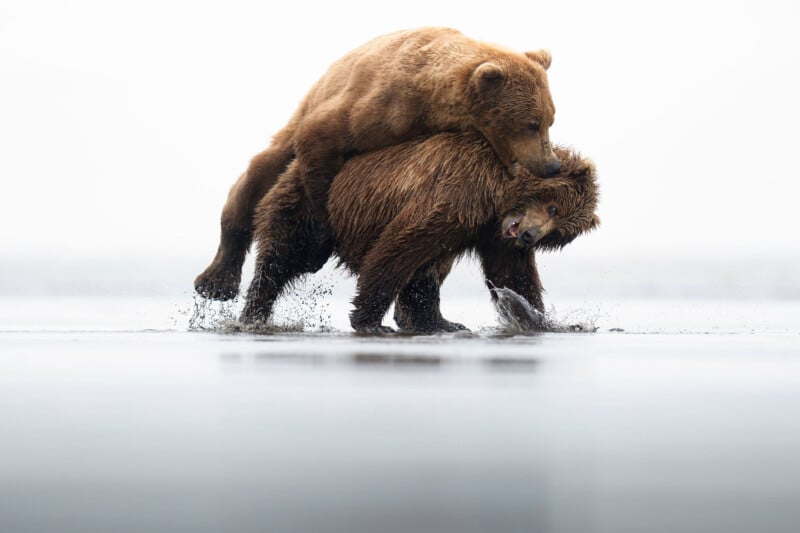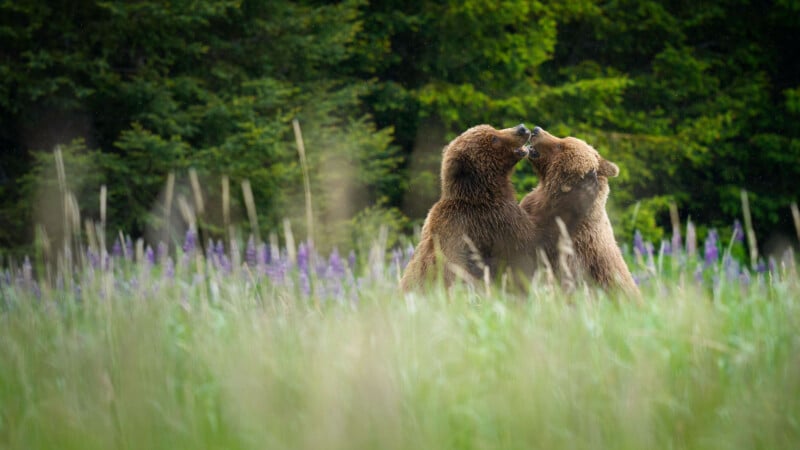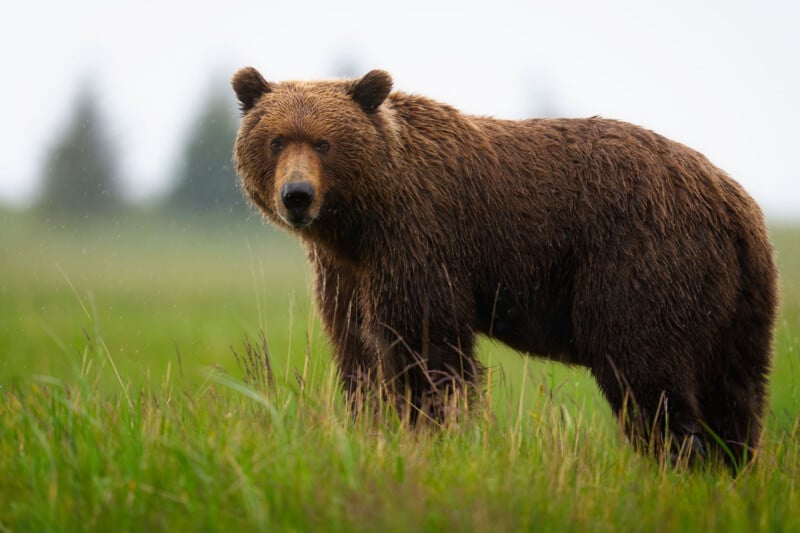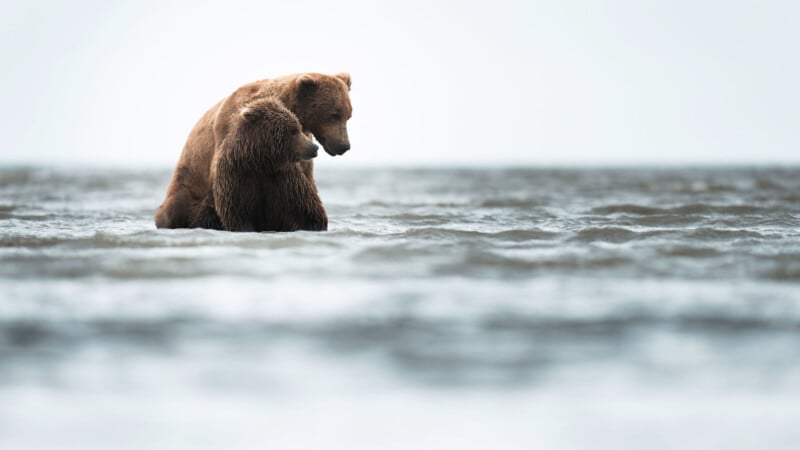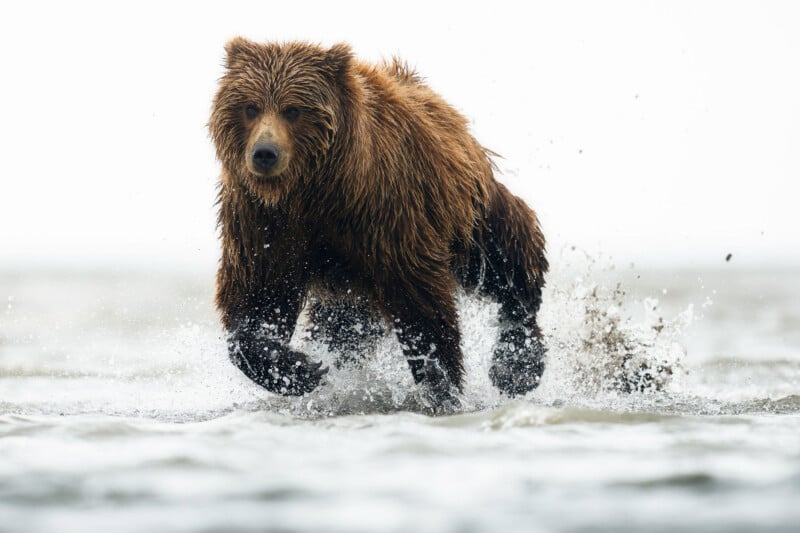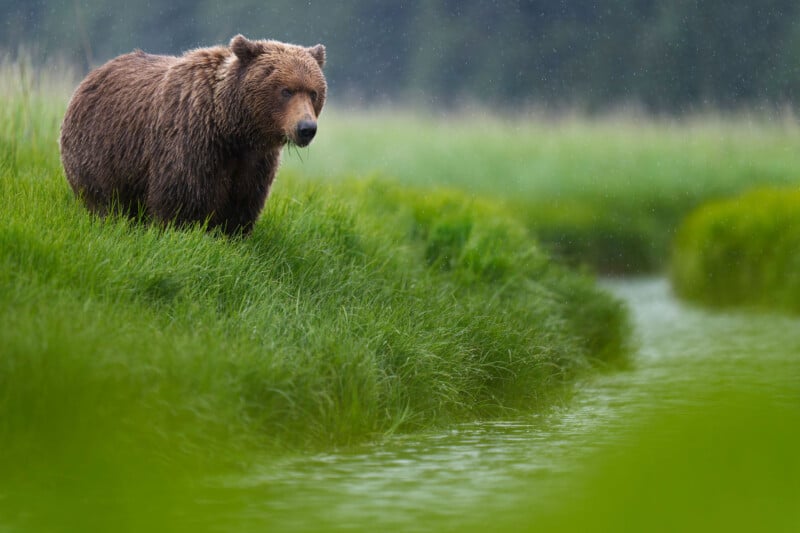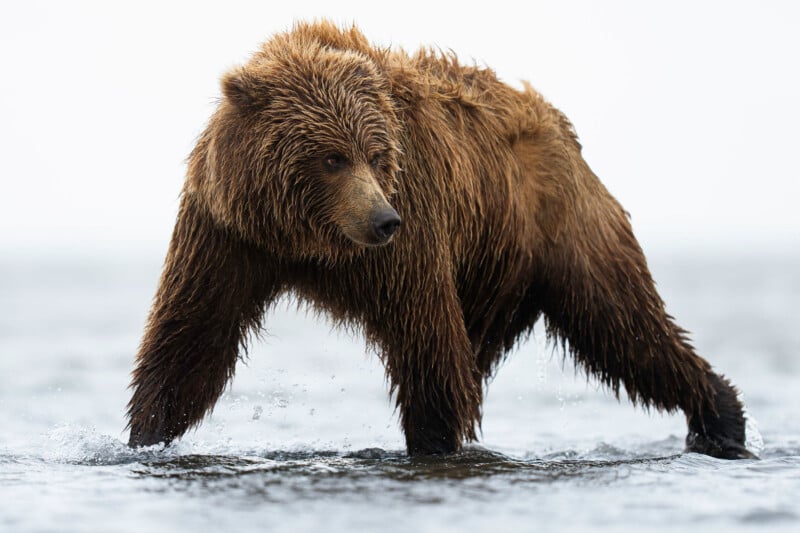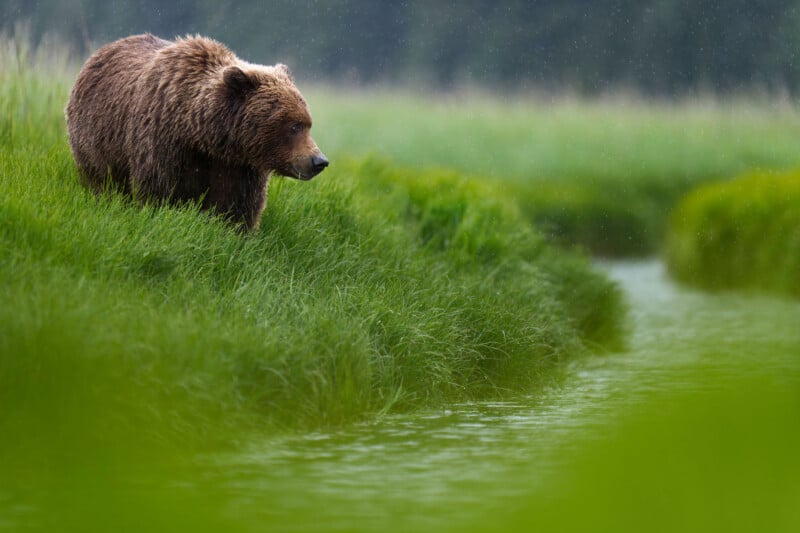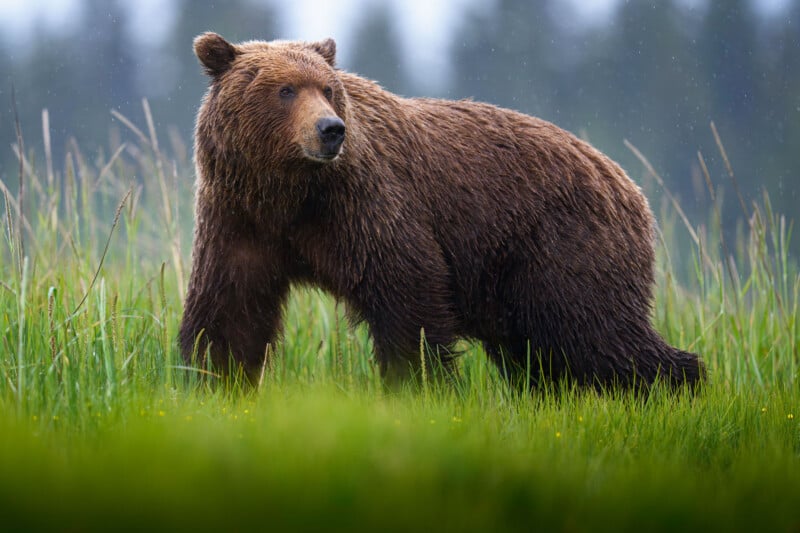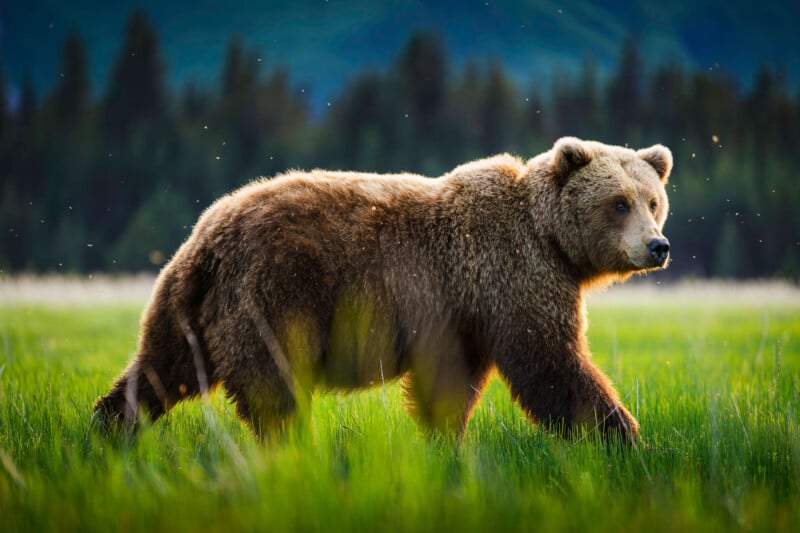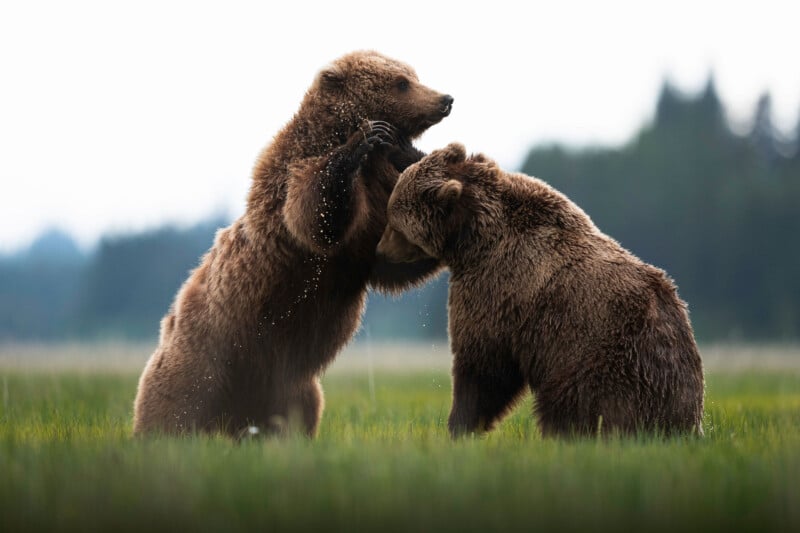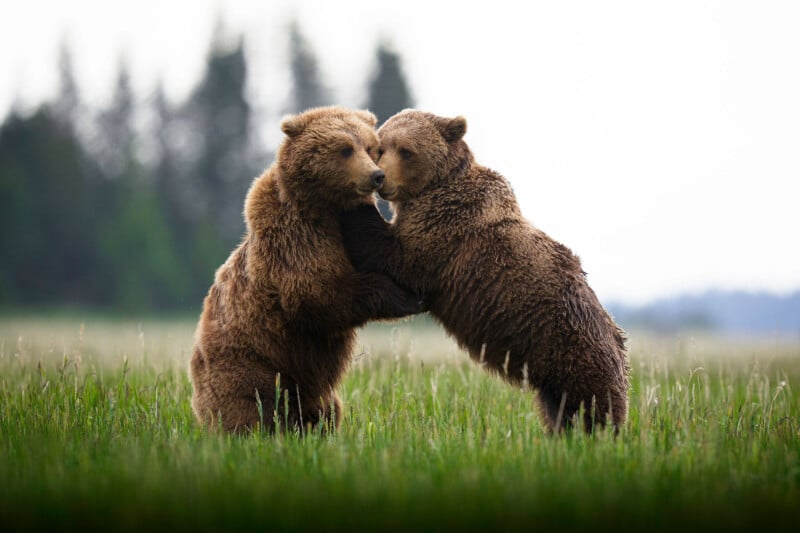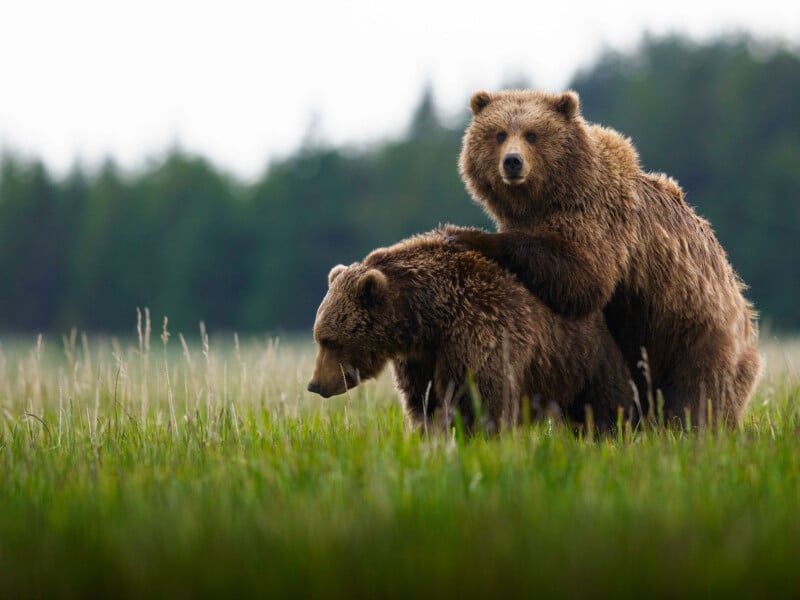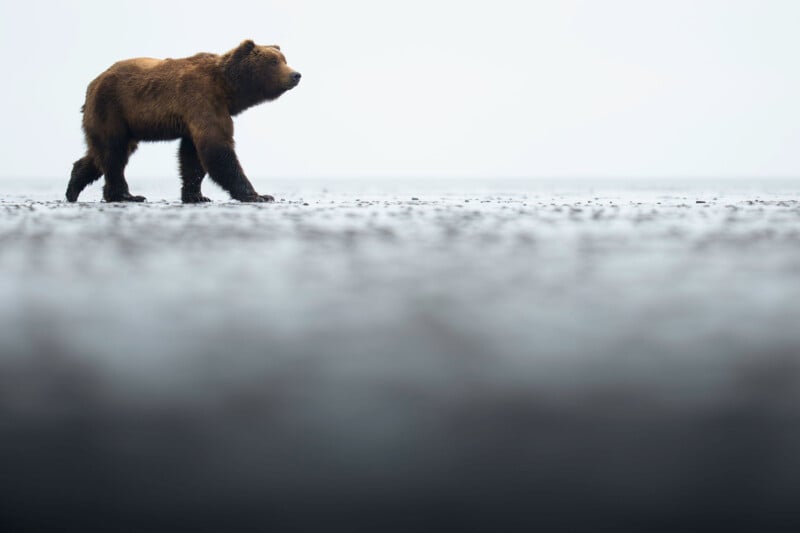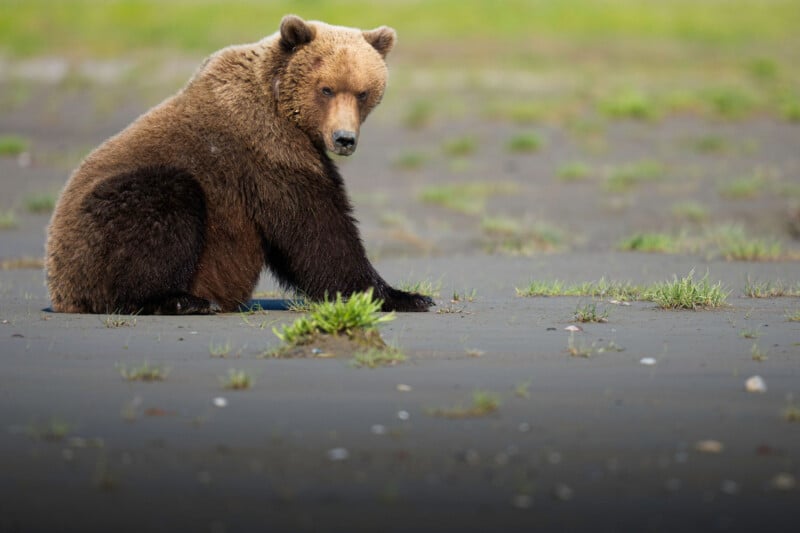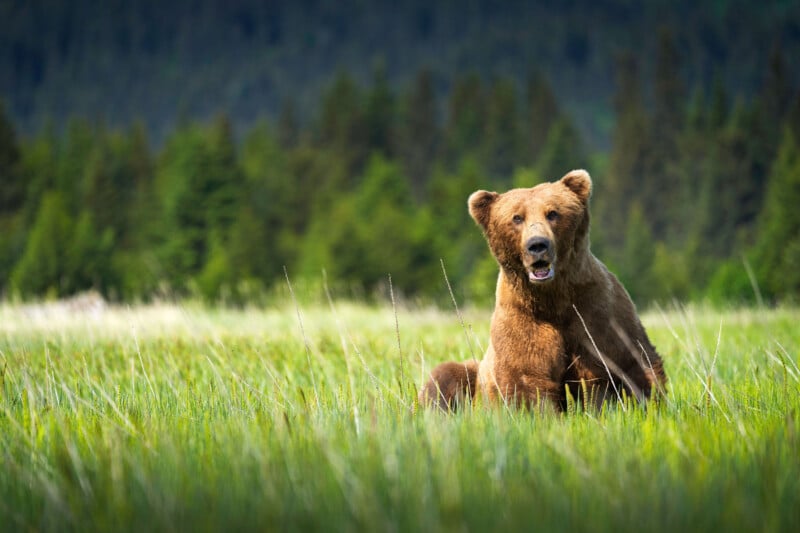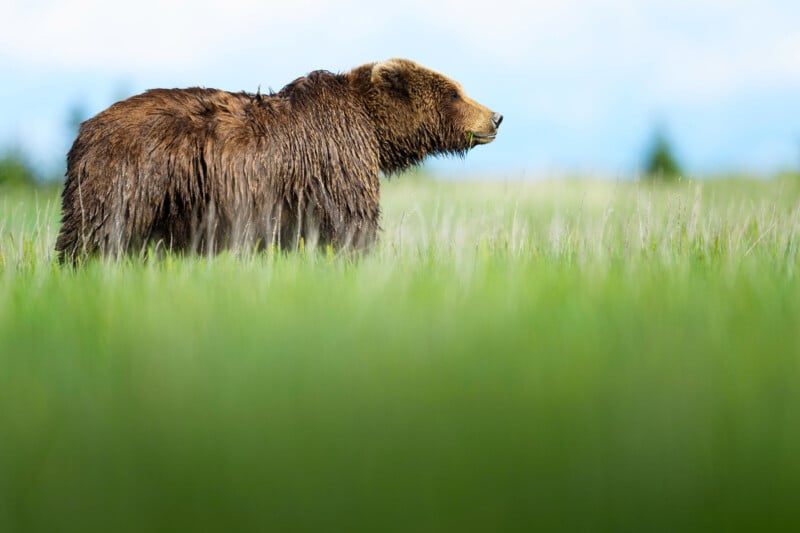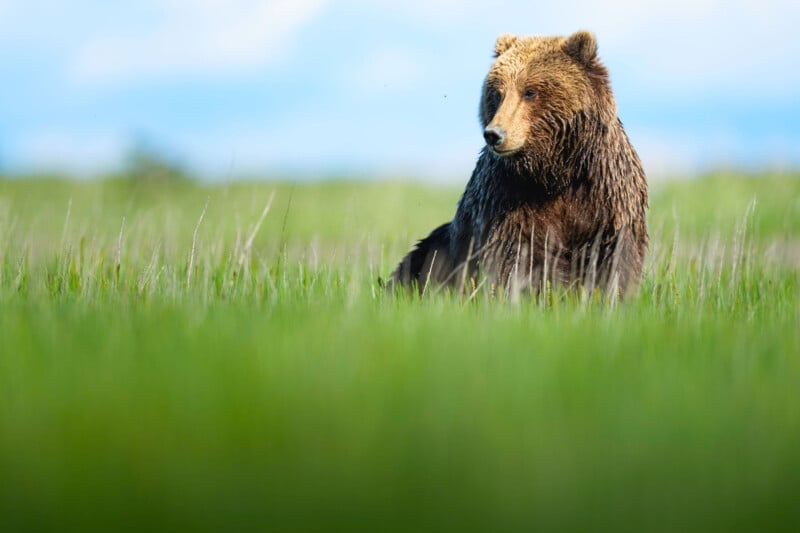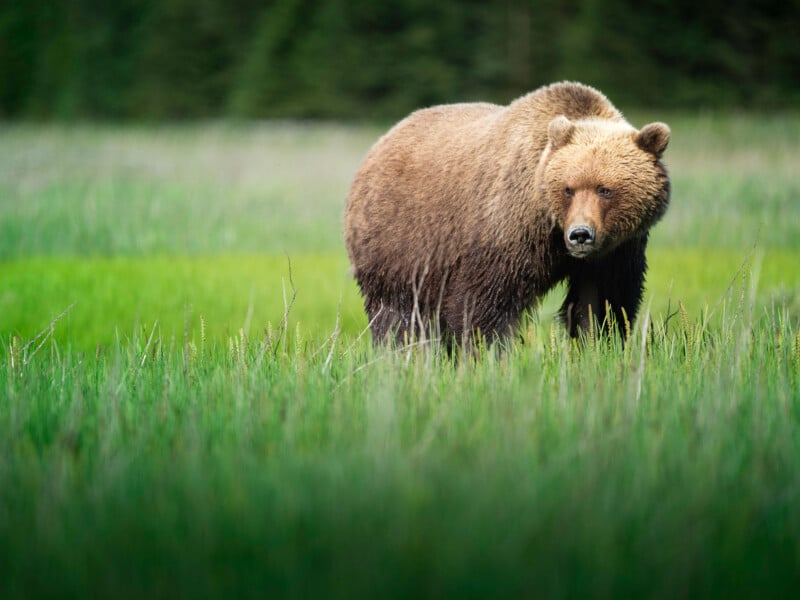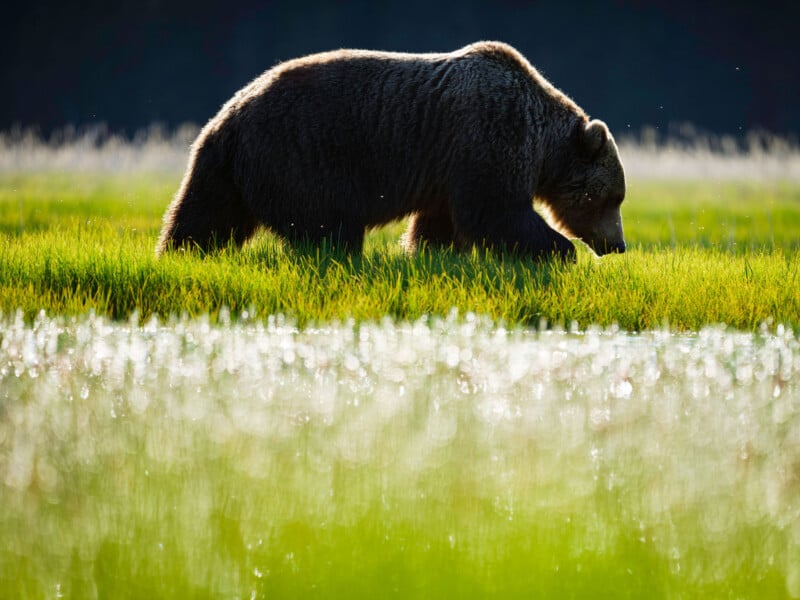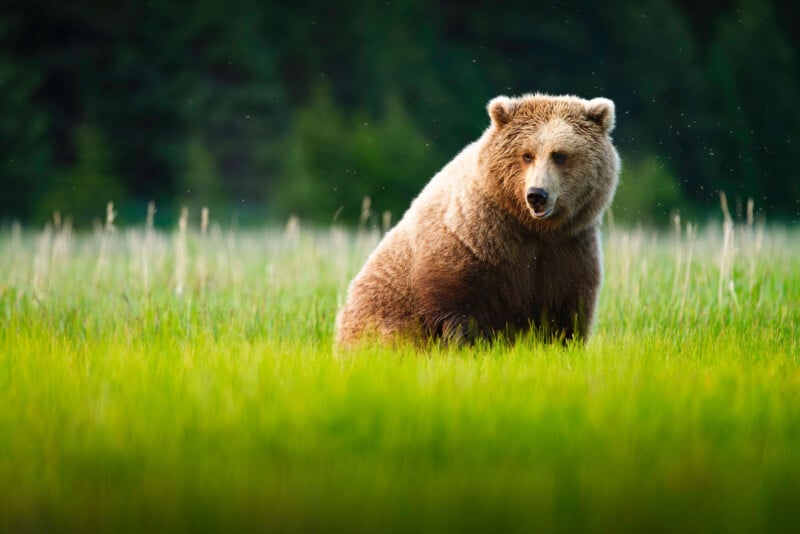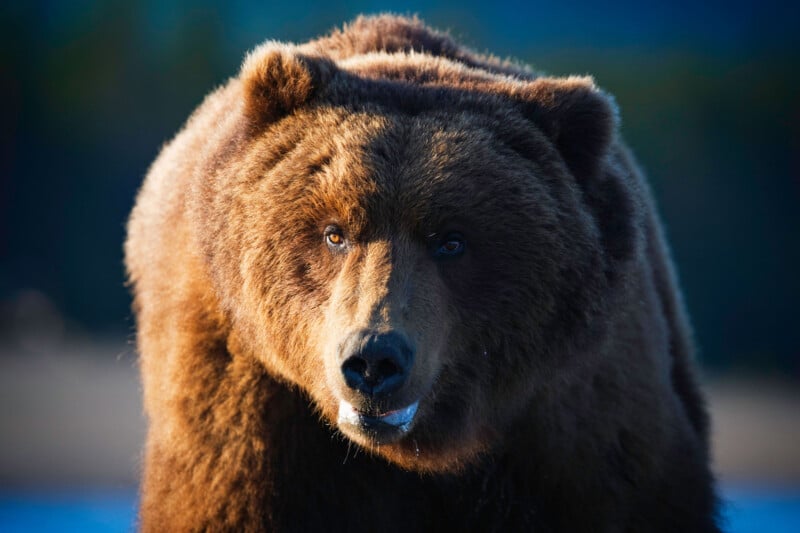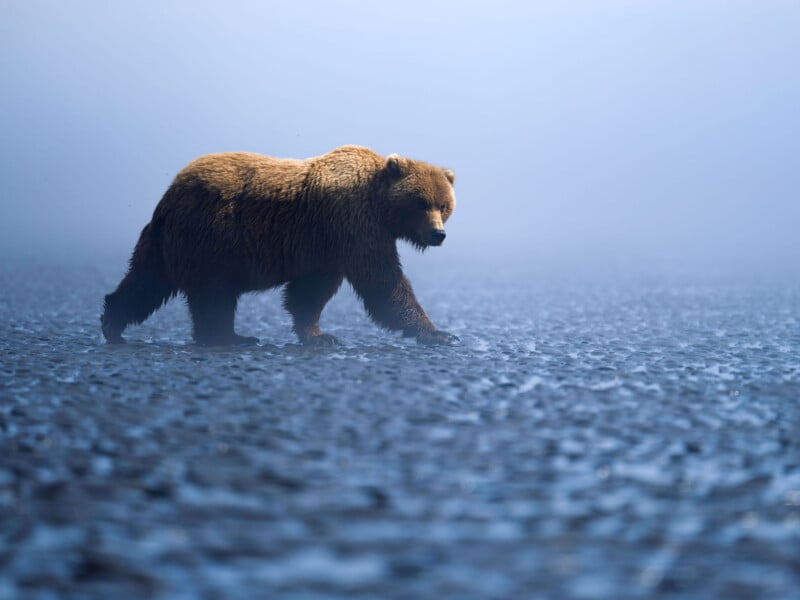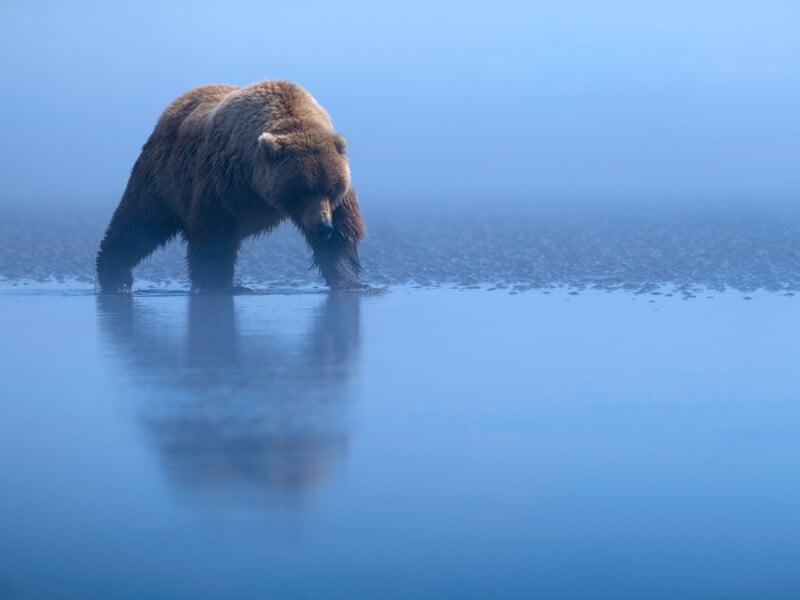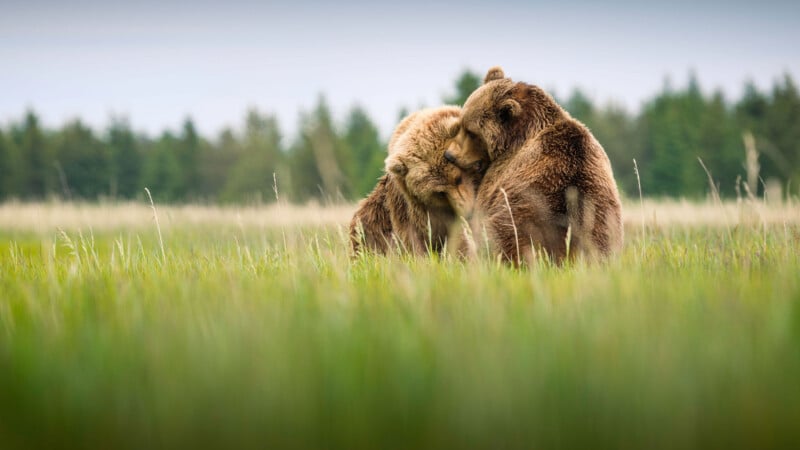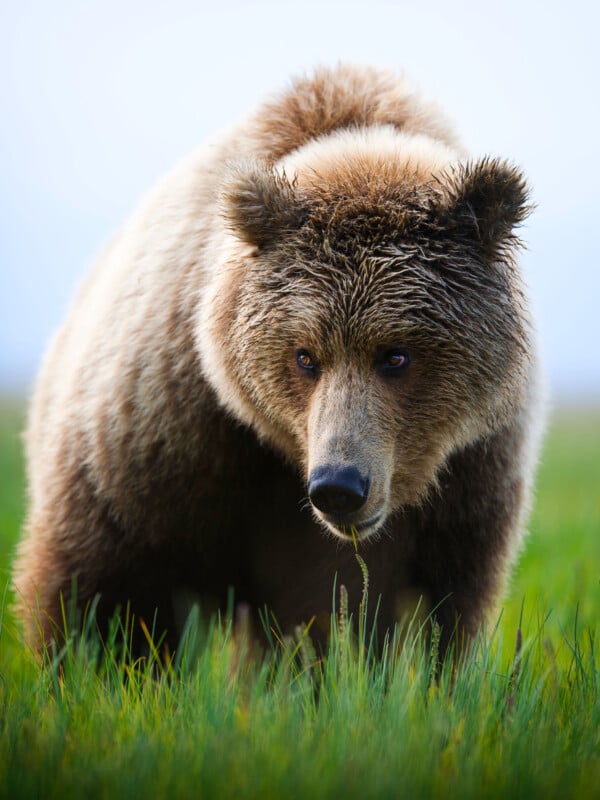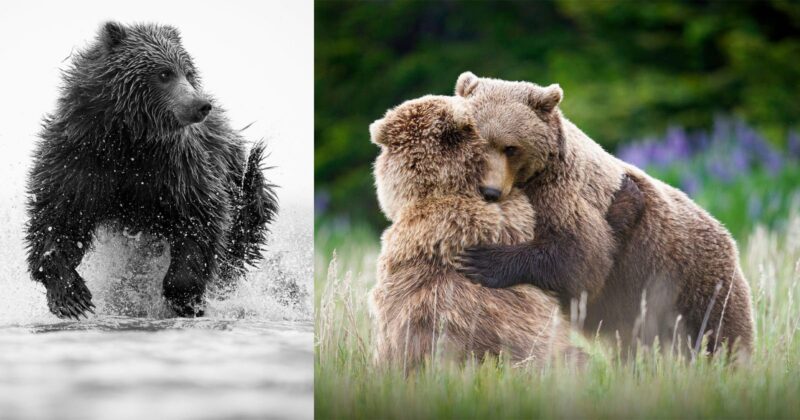 Photographer Matthew Trabold was standing in the same field as the bears.
Photographer Matthew Trabold was standing in the same field as the bears.
After a trip to Petersburg, Alaska, photographer Matthew Trabold crossed paths with his first brown bears, but left frustrated having never gotten close enough to capture a compelling shot.
However, Trabold’s guides, Arthur Lefo and Brooke Bartleson, told him about a lodge located in Lake Clark National Park where close encounters with brown bears happen on a daily basis.
Naturally, Trabold booked a trip, and it did not disappoint. “I witnessed some of the most extraordinary scenes of wildlife behavior in my life,” he tells PetaPixel.
The pro photographer went during mating season and watched as male bears courted females for extended periods. “There is a very interesting dance that happens between males and females as they decide whether or not they will mate,” explains Trabold.
He also witnessed the bears go clamming during low tide. “This is not something every bear knows how to do; it is a learned behavior passed down from their mother. Watching them dig into the sand, pull out a razor clam, snap the shell open, and slurp the creature inside was wild to see.”
Trabold says that some of the best images came during the early evening as the sun was setting. “If you were in just the right place, you could get this beautiful rim light on the bears’ fur as they grazed through the meadow, making for some truly striking images,” he reflects.
Trabold says that humans and bears coexist at the lodge and that his photos were taken while standing in the same field as the potentially dangerous bears.
“We have wildlife guides alongside us ensuring we are safe the whole time,” he adds. “This allowed us to get down at eye level with the bears in very close quarters.”
He notes that photographing bears in such close proximity requires a “delicate approach”, but the lodges he stayed in — Silver Salmon Creek Lodge and Alaska Homestead Lodge — were built specifically so that humans can coexist with the bears.
“This meant no hunting of any kind in their area among other things. Bears are creatures of habit. They are very smart. If you treat them well and respect their space for a long enough period of time, they can coexist alongside humans,” he says.
“That is one of the most beautiful parts about this area. Many of the bears we were photographing had been there since the inception of the lodges or were born there and grew up alongside people.”
Trabold says he learned that humans and wildlife can coexist if there is mutual respect for one another.
“Bears are often seen as these brutal killers, but that is far from what I experienced. Polar bears are a different story; they will kill a person at a moment’s notice,” he says.
“My time with the brown bears couldn’t have been more different than that. We had some of them grazing well within 20 feet of us, not having a care in the world that we were there alongside them.
“It was truly one of the most powerful and surreal experiences of my life. With an appropriate understanding of brown bear psychology and their habits, people can happily live amongst these beautiful animals without having to harm them.”
Trabold took a Fujifilm GFX100 II with a Fujinon GF 500mm F5.6 attached and a Sony a1 II with a Sony 400mm F2.8 G-Master lens for the trip.
“Depending on the situation, I switch my 400mm out for the 70-200mm GM F2.8 Mark II. These cameras did a fantastic job of keeping up with the rapidly changing conditions,” he says.
“The GFX isn’t the fastest camera out there, but nailing a shot on a digital medium format camera of any wildlife gives you images that are simply mind-blowing. That level of detail simply can’t be matched.
“The Sony a1 II is a workhorse, shooting at a max frame rate of 30 frames per second — which is overkill in my opinion — is a fantastic tool to have on hand. The autofocus on that body is really good as well.”
More of Trabold’s work can be found on his Instagram and website. Special mention to Arthur Lefo (Silver Salmon Creek Lodge) and Brooke Bartleson (Alaska Homestead Lodge).
Image credits: Photographs by Matthew Trabold.

